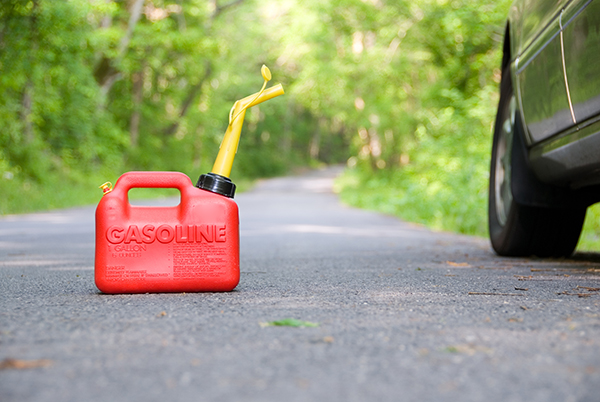
Here are some factors to consider before you try to build an underground bunker on your own. (h/t to BackdoorSurvival.com)
1. Air quality
Aside from a fire, other things can interfere with the air quality in your bunker. Prepare at least two ventilation systems, so you have a backup if one breaks beyond repair while you’re in the bunker. Make sure that the vents of the systems are protected from birds, debris, and the weather conditions on the outside.
2. A cave-in
With help from an engineer who has experience with subterranean buildings, you can plan a well-designed bunker. A bunker with a solid foundation can prevent cave-ins when SHTF.
3. Collecting water
Aside from keeping rainwater out of the bunker, you need to bury the bunker deep enough, so it's protected from surface impact. However, this can be affected by the depth of your water table, which are the boundaries between unsaturated ground and land that's saturated with water.
If the bunker is below the level of the water table, it will flood regardless of the building materials used. To prevent this, put the bunker at ground level then pile dirt on top of it. You will also need a lot of dirt so the bunker is safe from impact.
4. Escape and accessibility
Don't be like other people with bunkers that only have one escape hatch. If you have problems like a fire or a flood in your bunker, you will need several ways to escape.
5. A fire
The walls of your bunker could contain a fire risk, such as Expanded Polystyrene (EPS) foam blocks. According to Clarence Mason of Tempest Building Systems, a lot of professional companies use EPS foam blocks. However, they are highly flammable and full of toxic chemicals that are used to make them less flammable. Since fire uses air, you need a ventilation system that can quickly replenish oxygen.
6. Floating
A bunker could also start to "float" in the ground. If a bunker isn't heavy enough, pressure from the wet ground can push the whole bunker out of the ground and make you be visible to anyone. This can be dangerous, especially after SHTF.
If you have a light bunker, it will come with skirts that can hold them down to prevent it from floating.
7. Harmful gas
Remember, most SHTF scenarios involve the release of some form of gas, such as war. To prevent a buildup of harmful gasses in your bunker, invest in an air filtration system.
8. Impact
A bunker can't survive the impact from something like a large earthquake, especially if you're in an earthquake zone. Additionally, a bunker in the blast radius of a nuclear bomb won’t survive.
9. Moisture control
Moisture control could be crucial to your air quality system depending on your environment. Without moisture under control, mold will overrun your bunker.
While mold isn't exactly worth panicking over, it can make your stay in the bunker uncomfortable. Additionally, long-term exposure to some molds may cause respiratory problems and maybe even death.
10. Psychological distress
Don't forget to account for your comfort when planning your bunker. When stuck in an uncomfortable situation, your psychological health and your life may be at risk. Not everyone in your family will be fine with staying in a small space for a long time, while others will get easily bored without any entertainment.
Others may find themselves out of sorts if they can't gaze at the sky while in a bunker, and the lack of sunlight will affect your circadian rhythm. This can also affect your day counter, which must remain accurate if you're waiting for radiation to dissipate. Prepare a light dimmer, set to follow any morning and evening plans so that you can keep track of time.
11. Radiation
Ensuring that a bunker can protect you from radiation may be complicated. While concrete can protect you, you need to know how it works. Concrete won't reflect radiation; it will absorb it. If concrete fills up, you’ll be exposed, which could spell death, especially if you receive a hefty dose of radiation.
Try to use special kinds of heavy concrete that absorb more radiation. You’ll need an extremely thick layer of concrete for the walls and floor of your bunker. Before you start building, calculate how much radiation your bunker has to absorb so you can stay protected.
12. Scavengers
Even without having to use your bunker, scavengers are already a threat to your safety. If a bunker isn't hidden well, looters will know where you are even after SHTF. Keep your bunker hidden to prevent scavengers from targeting your supplies. (Related: Prepper essentials: A guide to camouflaging your property.)
13. Steel
Using steel as a building material for a bunker means it will corrode underground. To prevent this, use thick steel or a different material. A shipping container is usually made of steel, which isn't strong enough for a bunker.
14. Waste disposal
Even an underground bunker requires a proper waste disposal system. A septic tank still needs to be emptied, and you will also need to get rid of any paper and plastic waste. If you don't have an in-depth system, you’ll have to physically get rid of the bunker, which runs the risk of exposure. Additionally, without proper sanitation, you could die of infection, off-gassing, or other causes.
Before building a bunker, consult some experts so you can avoid these dangers before SHTF.
Visit Preparedness.news for more tips on how to properly set up your underground bunker.
Sources include:
Please contact us for more information.























